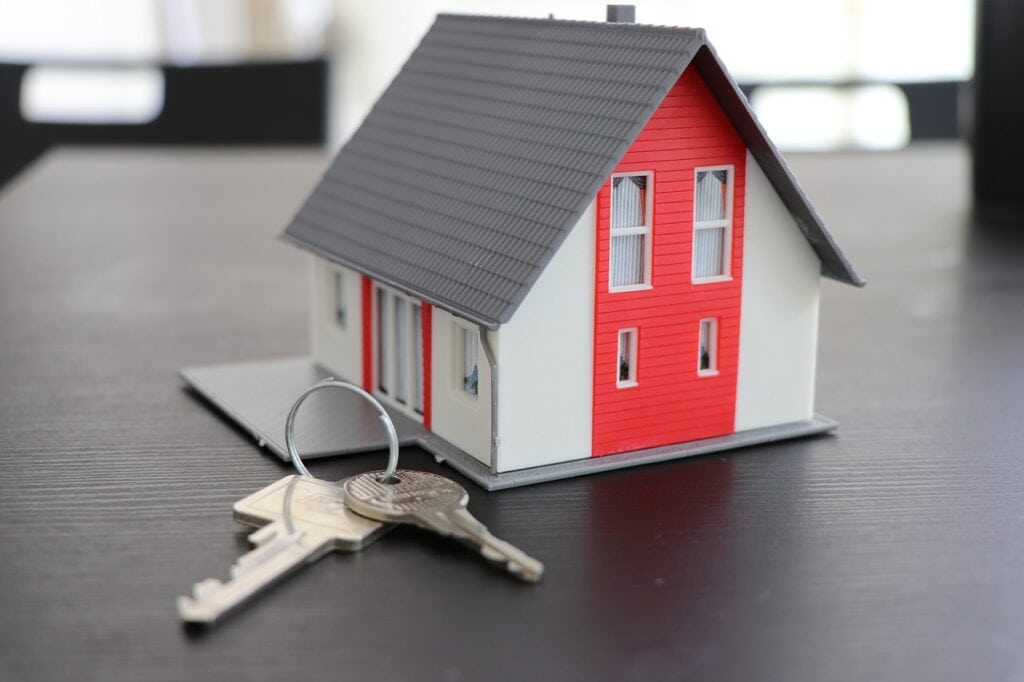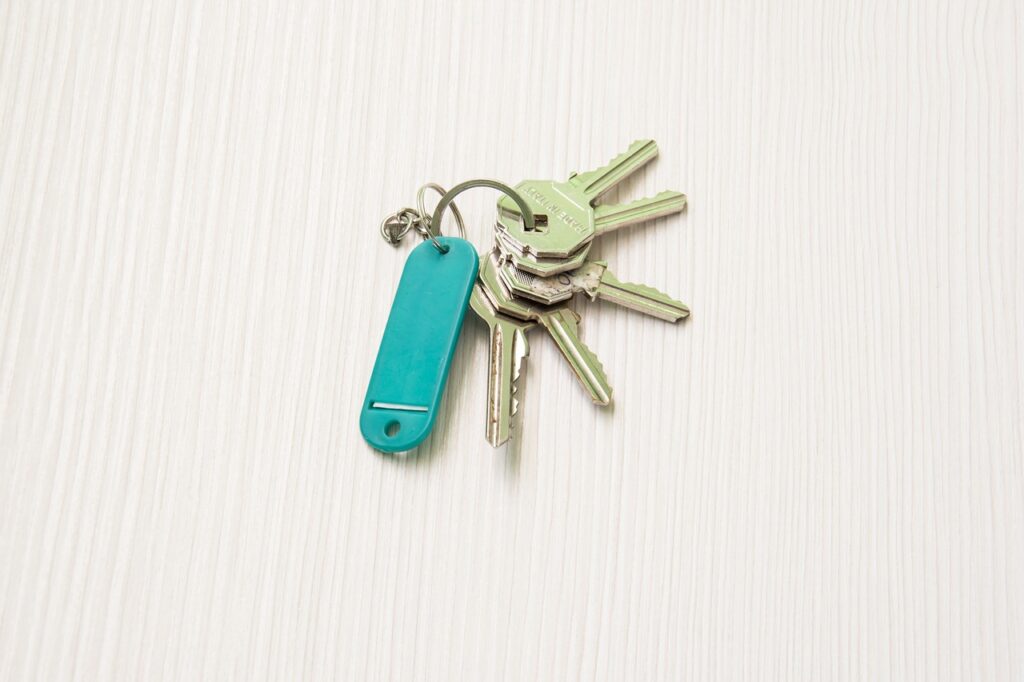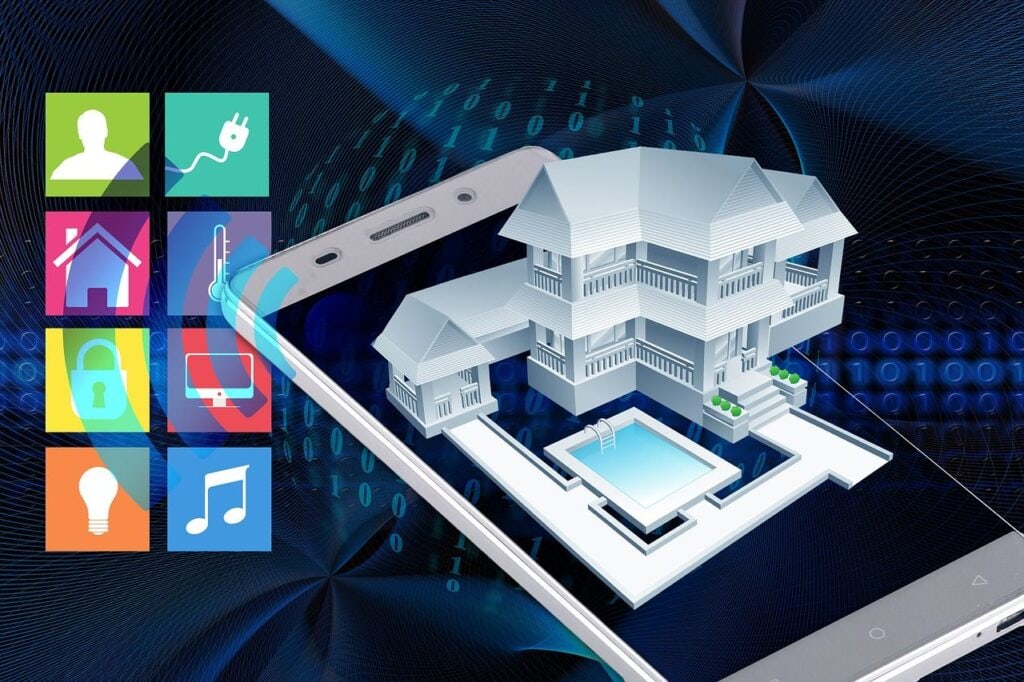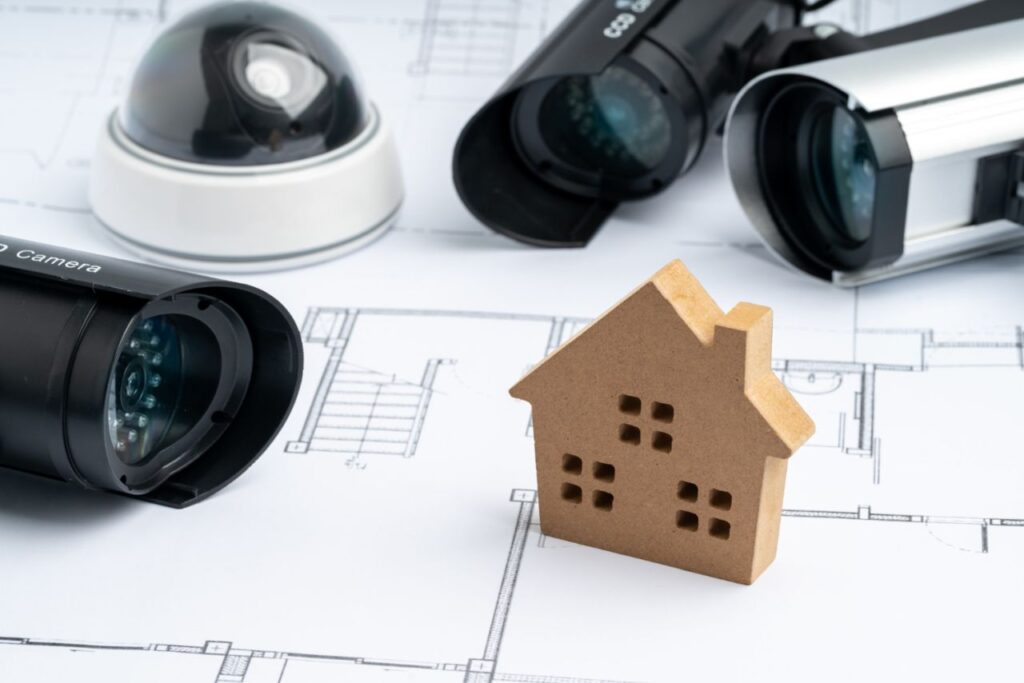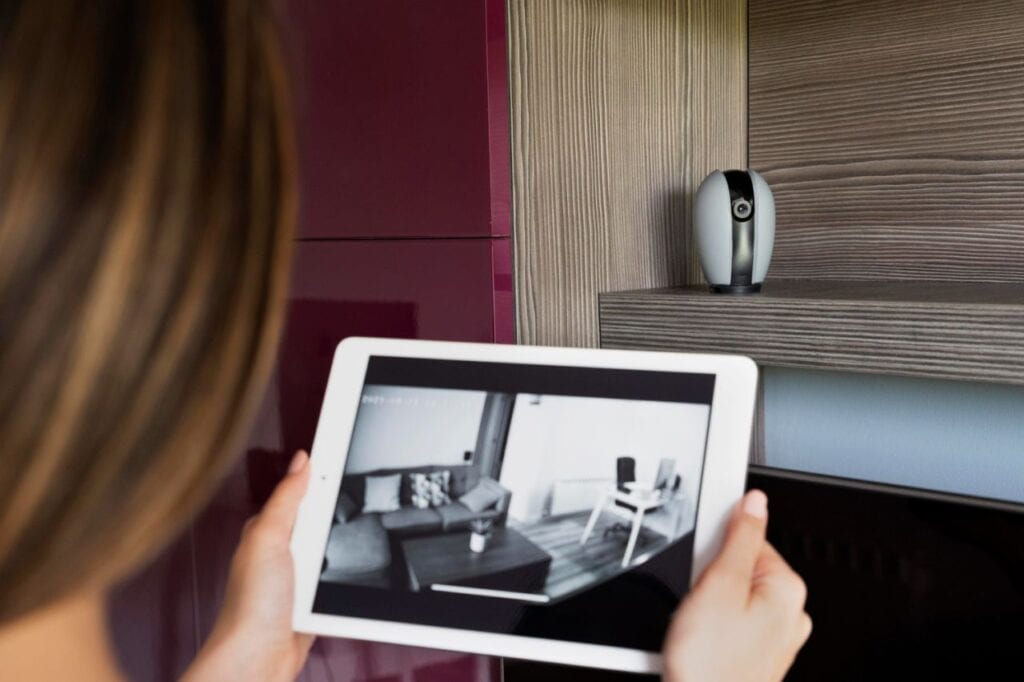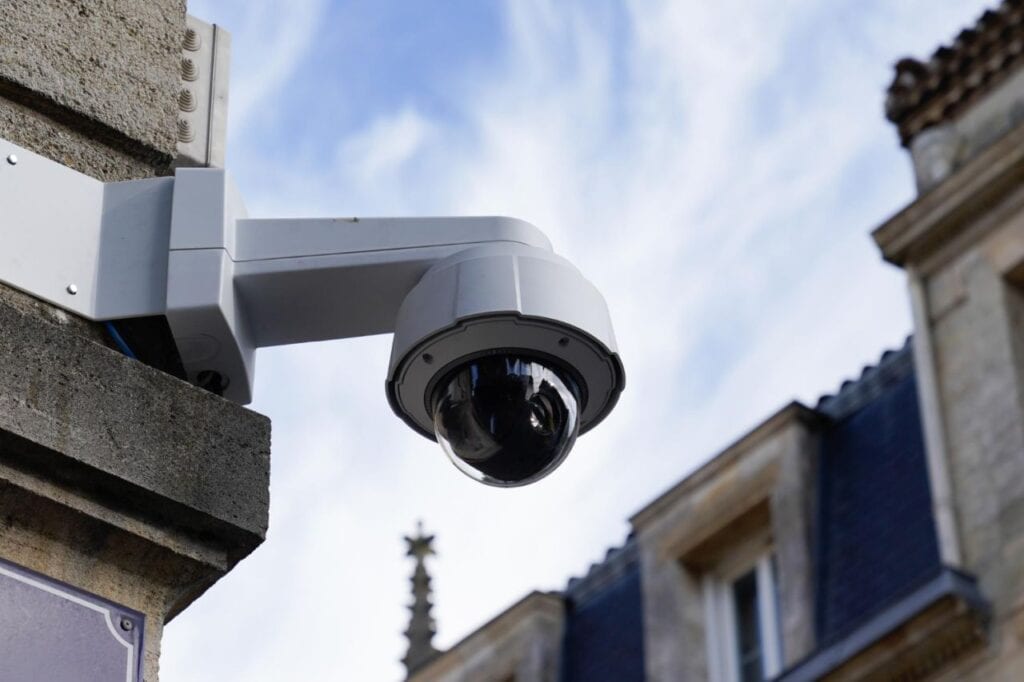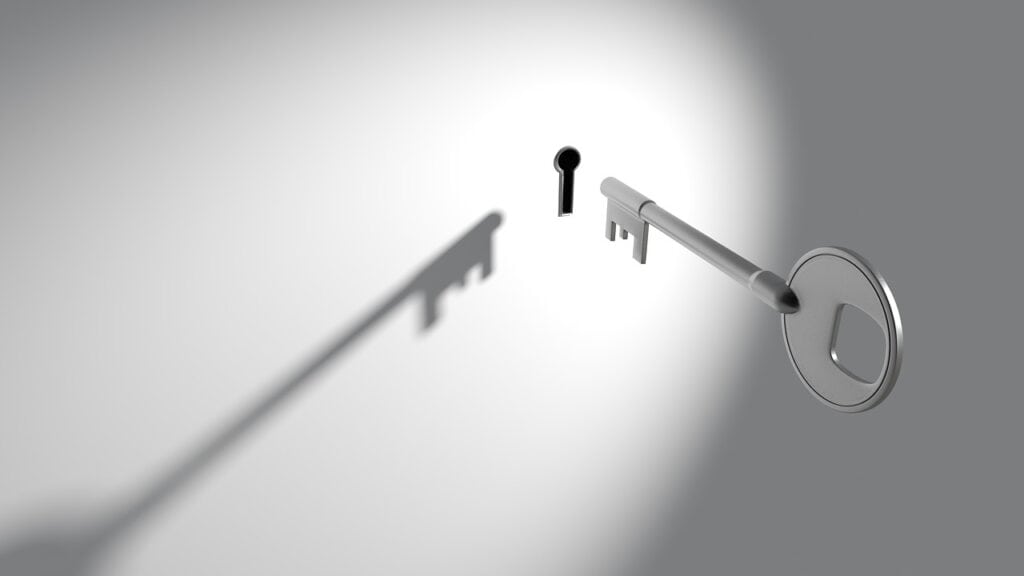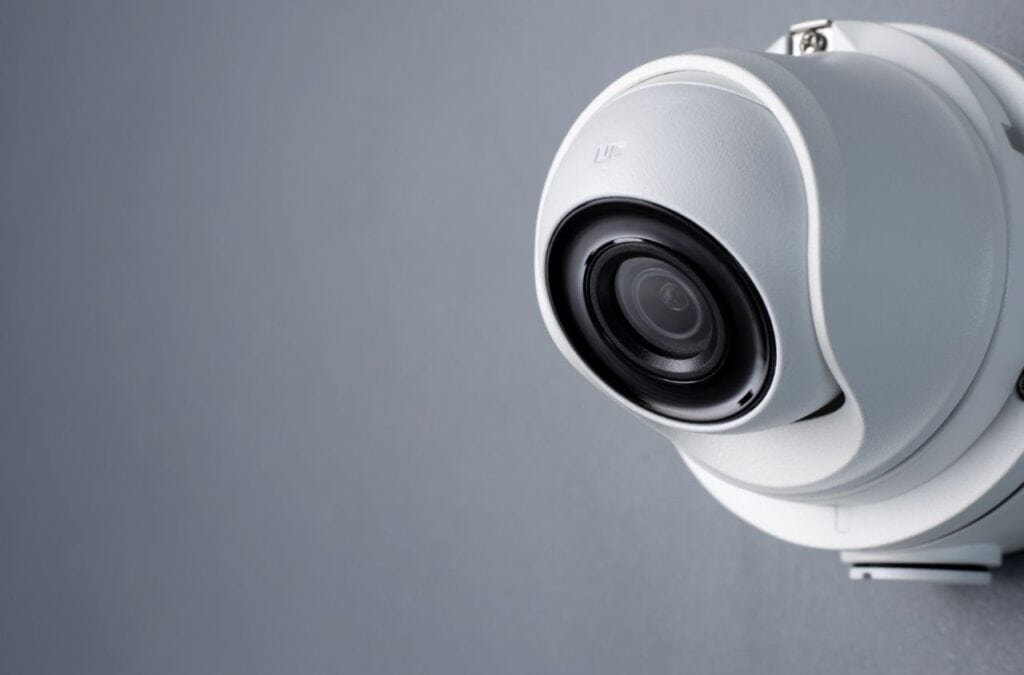One of the most effective ways to safeguard your family and friends and your possessions is to set up a home security system. They've been around for quite some time and are widely used as a means of home security. But how do these systems work in practise?
The technology used in home security systems has come a long way in the past decade. Many modern security systems are wireless and can also operate your home's automation components. This means that these systems offer a greater value for the money. In addition, their use has been made much less complicated by the development of touch-screen panels and smartphone technology.
This manual will help you learn how security systems function and what they can do for you. The article will cover the benefits of installing cameras as part of your home security system, the similarities and differences between wired and wireless security systems, and the most important components of a security alarm system. The role that these tools can play in your future security will also be explored.
Exactly What Does The Term "Home Security System" Mean?
A home security system consists of a variety of tools, both technological and physical, for keeping a house safe from intruders.
The protection of your home and family should be your top priority when making the decision to instal a home security system. The victim may sustain harm in a home invasion, robbery, fire, flood, or other catastrophic event. These are all things that the vast majority of home security systems can monitor. The sensors in these systems can either be hardwired or wirelessly connected to a central processing unit. The central point then makes contact with the wider world through either a cellular or landline connection. The hub can be a wall-mounted touchscreen display or a compact box set on a tabletop or inside a cabinet.
The sensors are placed in key locations, such as the front door, windows on the first floor, and hallways and other high-traffic areas of your home. The sensors can also be placed in other types of high-foot-traffic areas. They are sensitive enough to detect when a door or window is opened or closed, as well as motion in the home. If the system is activated, it will notify the central hub whenever a sensor is triggered. The hub will then sound an audible alarm, contact you (via phone call, text message, or push notification via an app on your mobile device), and, in the case of professional monitoring, contact the monitoring centre.
If you have professional monitoring, a team of trained security personnel will monitor your system, and if they detect danger, they will try to contact you and the authorities. Each professionally installed security system must have a three-year monitoring contract with a reputable firm. Many DIY systems include professional monitoring as an option, but without requiring you to sign a long-term contract.
Frequently Asked Questions About Home Security System
Wireless communication protocols, such as Zigbee and Z-Wave, or sometimes a company's own proprietary radio protocol are used in the operation of a wireless alarm system. These protocols enable the sensors you place throughout your home to communicate with the hub of the system. After that, the hub will communicate with the outside world through a cellular connection (many use Wi-Fi as a backup). Hardwired security systems, in which all of the sensors are wired to a central hub and installation requires drilling and electrical expertise, may be familiar to you; however, in today's world, nearly all residential security systems use wireless communication technology instead of hardwired systems. Finding a company that will install a wired system or even one that will use a landline phone is becoming increasingly difficult.
Z-Wave is the most popular protocol, and the vast majority of major alarm companies, including those that offer DIY and professional installation, use Z-Wave in some form or another. The fact that it is extremely safe and uses very little power means that battery-powered sensors can operate for many months or even years on a single charge. These are the primary benefits that it offers. Z-Wave devices each have a respectable range, and when used in conjunction with one another in what is known as a mesh network, they are capable of achieving a range of up to 600 feet. In addition, all Z-Wave products are required to have backward compatibility (something mandated by the Z-Wave Alliance oversees the protocol). This ensures that your older sensors will always work with newer ones, making your security system more resistant to technological advances.
Wireless home security systems are very reliable. Although their technologies have developed and improved, they have surpassed wired systems as the top choice for professionally installed DIY companies. "Wireless communications when it comes to alarm systems are almost always redundant, meaning they use a combination of methods to send an alarm signal," Rothman says. "It would be very difficult to find someone who would install a completely hardwired residential security system." However, many homes have preexisting wiring for hardwired security systems, and this means you still might face a choice of whether to use a hardwired or wireless system.
Once you've decided to take the plunge, how do you choose between a professionally installed system and a DIY system? Price is primarily why people choose DIY over professionally installed. But what do you lose by not paying for an installer? According to Paul Rothman, editor-in-chief of Security Business, a magazine covering the professional security industry in partnership with SecurityInfoWatch.com, you give up important expertise. "There is a right way and a wrong way to hang a camera or position a motion sensor inside a home," he says. "Professional installers understand how to do this, but it is not so easy for many consumers." Additionally, he points out that a professional can make sure everything in the home works together "instead of a bunch of equipment with different apps and control functions." However, the advantage of a DIY system is that you can choose to self-monitor – something no pro-install company offers – and not be tied into paying monthly fees.
Many apartment complexes have built-in security systems, such as an intercom at the main entrance. However, you have every right to invest in protecting your property should your unit not have a burglar alarm system already installed.
Both professionally installed systems and DIY systems can be used in an apartment. To avoid losing your security deposit, check to see what your lease says about drilling holes in the walls. If you can't drill new holes, use tape or other non-invasive mounting options. Less permanent installation techniques also make it easier to take these systems with you if you move.
DIY systems are a good fit for smaller apartments because you have less space to protect and needless equipment and expertise to set it all up. Also, you don't need to sign a multi-year contract as you do with professionally installed systems.
All-in-one solutions such as the Iota system offered by Abode or Google's Nest Secure system may be your best option, and both can be professionally monitored without a long-term contract. Abode's Iota has an integrated high-definition camera, siren, and motion detection sensor in the hub. Paired with a contact sensor for your door, this may be all you need to keep an eye on your place. Nest's system uses a single device that acts as a motion sensor and a contact sensor, plus its tiny hub is also a keypad and motion sensor.
If you're going to install a home security system and have it professionally monitored, you may need to apply for a permit. This requirement varies, so be sure to check local ordinances. While you may not need a permit to install a self-monitored home security system, if you have a loud siren that might result in someone calling the police, you could be on the hook for a false alarm if you don't have a permit. For those who need a permit, make sure to contact your alarm company and give them your permit number once you have it. Some police departments require the monitoring station to give them the permit number before responding to an alarm.
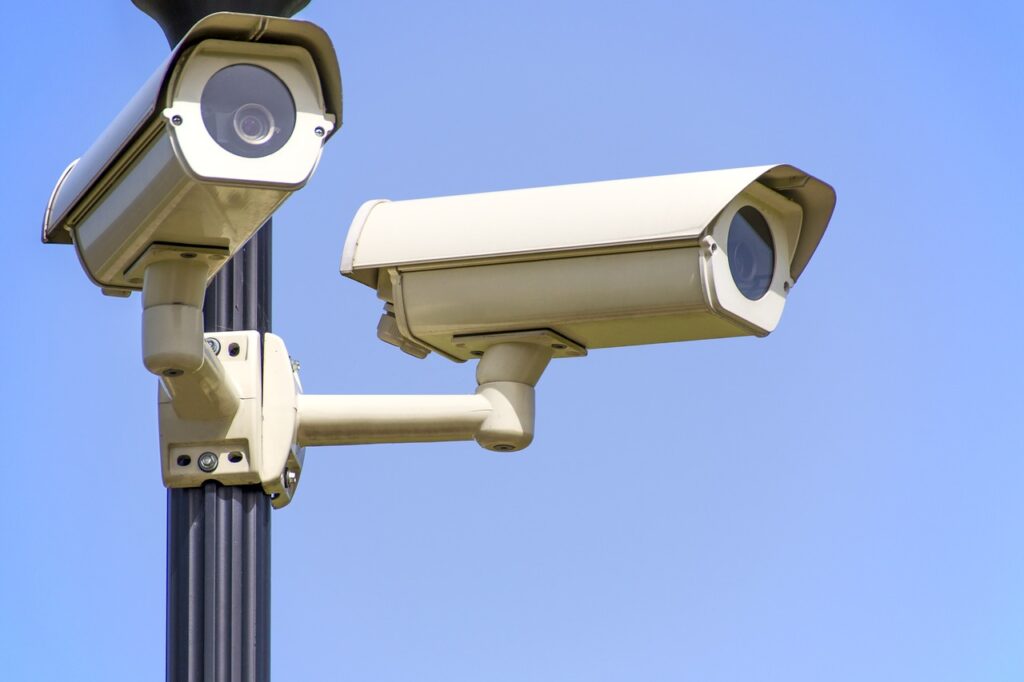
What Is The Function Of A Home Alarm System?
Installing a home security system is a big decision, so it's in your best interest to learn as much as possible about how it works beforehand. Now that users understand how the system functions, they can perform maintenance and possibly tweak the sensitivity of some sensors. Sadly, most people will install a security system but then fail to take the time to learn how it operates. It's possible that, between false alarms and accidentally locking yourself out, this will create more hassles than it resolves.
Guarding points of entry and egress with sensors that, when triggered, communicate with the security system's command centre is the backbone of how these systems function. The alarm system will sound an alarm and send a signal to the control panel, which will then alert the owner, nearby neighbours, and security personnel. The system's operation can be better grasped by learning the role each part plays.
A Central Processing Unit Or Control Board
This central part is what makes a security system work. It uses radio waves to talk to you and the monitoring centre, as well as the security sensors in your home. Most of them come with a keypad or other means of manually activating and deactivating the security system.
The security system's control panel acts as the brain of the system. From that point, you could control every facet independently. It is from this location that you will be able to arm and disarm your security system, set off alarms whenever one of your sensors detects a breach, and alert the appropriate personnel.
Every panel can be programmed, and almost every command can be encrypted with a passcode. Alarms can be activated and deactivated at any time with the use of a wireless remote, which is now supported by most modern control panels.
Bluetooth Keypad And Remote Key Fob
These represent alternate options for activating and deactivating the system. If your house has more than one exterior door, you may want to consider purchasing additional keypads in case you need them. The majority of these systems have a keypad built right into their control centre. In addition, a smart wireless system allows you to operate the alarm from an app on your mobile device.
Sensing Contacts
These small, lightweight, battery-operated gadgets are made of plastic and house a sensor and a magnet. The sensor, in this case, would be placed on one side of a door or window, and the magnet on the other. By breaking contact when a door or window is opened, a signal is sent to the central control unit.
Movement Detection Devices
These larger plastic battery-operated devices are typically installed in the ceiling to illuminate hallways and other areas through which guests must pass. Passive infrared is the primary technology used by these; it can detect motion by analysing temperature differences.
Break-Glass Detectors
A glass-break sensor is an audio detector that can detect sounds of breaking glass from a distance of about 25 feet. They work wonderfully for homes with big pets that might trigger motion sensors. A glass-break sensor is a great additional safety measure for glass doors and windows. This is due to the fact that an intruder can easily bypass a contact sensor by breaking a window and entering the house via the broken glass.
Extremely Loud Alarms
Despite the proliferation of high-tech wireless options for deterring burglars, a traditional alarm that makes a loud noise is still the most effective way to alert you and your neighbours to a potential danger. Each home alarm system comes with a built-in alarm. The vast majority are built right into the control panel, though many also have an external siren option. The decibel level of the noise they make is typically between 80 and 115.
Placards And Stickers For The Yard
Brightly coloured signs announcing the presence of a security system should be considered mandatory installation and the first line of defence. Many would-be burglars, however, will give up on breaking and entering once they spot such devices. Joe Kuhns, a professor in UNC Charlotte's Department of Criminal Justice and Criminology, conducted research in this area. The research was conducted to identify the factors that both encourage and discourage convicted burglars. Whether it's a sign or a clearly visible camera, "the burglars themselves suggested to us that if they saw indications of an alarm system, they would simply go elsewhere," says Kuhns. A visible camera or sign could both serve as alarm system indicators.
Instruments For Monitoring The Environment
The installation of smoke, heat, carbon monoxide, water, and temperature sensors can safeguard you and your home from potential dangers like fire, frozen pipes, and gas poisoning. Most security systems, however, do not have these sensors built in. In addition, professional monitoring of environmental sensors may not be available with some DIY systems; therefore, it is important to determine whether or not such monitoring is required.
Monitors For Doors And Windows
When the security system is armed, any time a door or window is opened, the corresponding sensor will notify the control panel, which will then disarm the system. Checking to see if everyone in your household is present before arming the sensors will ensure that you don't accidentally set off a false alarm.
Movement Detection Devices
Detecting motion is the primary function of motion sensors. The sensor creates an invisible perimeter around a target area that, once breached, triggers an audible alert.
Sensors For An Alert
Alarm systems in use today are notorious for their extremely loud noise. The high volume will definitely wake up the homeowners and their neighbours. However, the alarm will usually frighten the thief into running away in a panicked state.
Cameras
Although many home security systems do not include them as standard equipment, surveillance cameras are the most popular add-on, according to representatives from various security companies with whom we spoke. The video doorbell camera is currently the most popular type of doorbell camera. These can either connect to your existing doorbell wiring or send a signal to your home security system wirelessly via Wi-Fi if motion is detected at your front door. Cameras attached to doorbells can sometimes even tell when a package has been delivered. Many people who regularly film outside prefer to use cameras that can withstand the elements.
These can be plugged into an outdoor socket or wired to an indoor socket, the latter of which usually necessitates drilling a hole in the wall. Batteries are used by some outdoor cameras, while solar panels allow for the operation of others without the need for constant charging. Despite being used by fewer people than outdoor cameras, indoor cameras are a standard feature in many home security systems.
Most surveillance cameras, regardless of placement, have the capacity to record motion and set off alerts. Some cameras even have facial recognition technology and are designed to specifically detect people. Cameras can either record video constantly or start recording only when motion is detected, allowing users to save space on their hard drives. Videos are kept for a month on a local hard drive or in the cloud.
Security Cameras
Using surveillance cameras in a variety of settings can increase the safety of your home. Here are a few instances of this:
- Allowing you to see areas that aren't readily apparent, such as the basement, far-flung areas within your property, garages, workshops, and so on.
- Giving you a look at the doors and windows so you can see who's at your front door, garage, or gate right now.
- Documents everything that went down while you were absent. This will make it easier for law enforcement to track down the perpetrator of any recent thefts.
- Most modern surveillance camera models allow for remote access via a wide variety of electronic devices.
The Break-In-Proof Security Film
When these films are applied to glass, it helps hold the shards together in the event of a break. The thief will realise that breaking in through the windows is an uphill battle and either give up or look for an alternative entry point where sensors are not present.
Video Conferencing
With a video intercom, the homeowner can talk to whoever is at the door without actually opening it. This improves security because opening the front door to a stranger invites danger, especially if they are a thief. This is especially important if the strangers are attempting a home invasion.
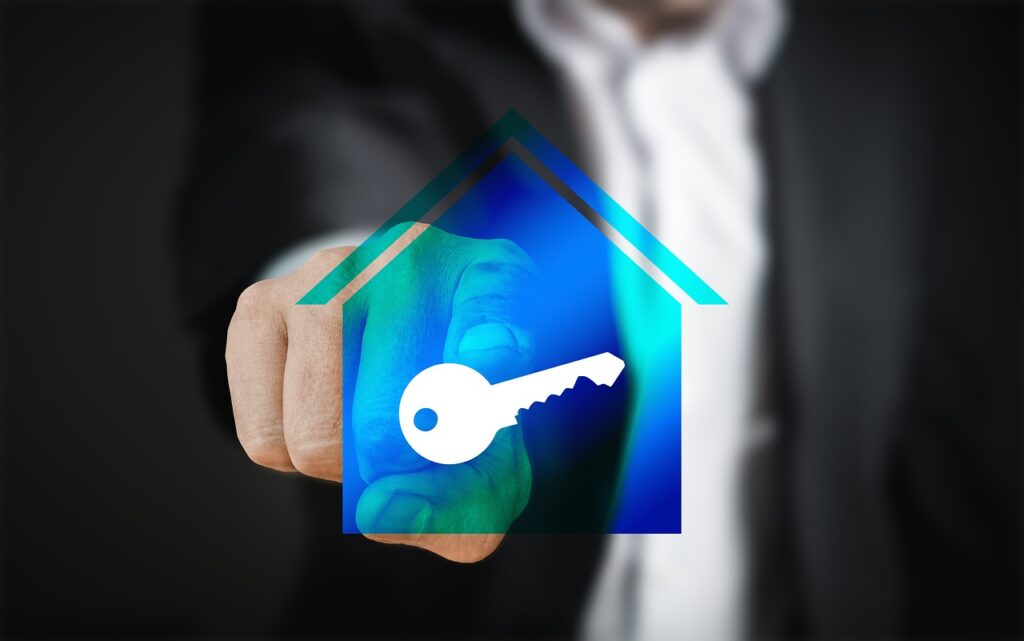
Home Security Systems: An Overview
The following are some of the most common types of residential security systems:
Diy
The user of a do-it-yourself home security system puts together the various parts and, most likely, uses a companion mobile app to keep tabs on things. Do-it-yourself systems and expert monitoring aren't mutually exclusive, though.
Professional
The term "professional home security system" can refer to one of two different things. In the first place, it could mean that a technician did the installation. Second, it can mean a system that is professionally monitored, in which case a team of people will be on the lookout for and reacting to any calls that come into a central hub. Some professionally monitored systems can, however, be monitored by the homeowner themselves, or even be self-installed.
Wired
A hardwired security system is installed and hardwired into the home's electrical system.
Wireless
On the other hand, there are no wires involved in a wireless security system. It uses a backup system that includes batteries, Wi-Fi, and cellular connectivity to stay in touch with the monitoring centre and the mobile app. As a result, wireless security systems require less effort to set up than their wired counterparts. In spite of this, you'll have to either get a new battery or charge the one you have.
Connected to the web, the user of an intelligent security system can monitor activity in real time via a mobile app, as well as receive alerts when motion is detected or an alarm is triggered and take remote control of the system. One other name for a smart security system is a "connected" security system.
Just Around Town
In contrast to smart systems, local alarm systems do not rely on internet connectivity. That's why home security systems installed locally don't offer any sort of remote access, monitoring, or alerts. Instead, you won't be alerted to an alarm's activation unless you're physically close enough to hear it. However, with a cellular or landline backup, local alarm systems can still be professionally monitored.
Conclusion
The protection of your home and family should be your top priority when making the decision to instal a home security system. This manual will help you learn how security systems function and what they can do for you. The role that these tools can play in your future security will also be explored. Sensors are placed in key locations, such as the front door and windows on the first floor. They are sensitive enough to detect when a door or window is opened or closed, as well as motion in the home.
If the system is activated, it will notify the central hub whenever a sensor is triggered. A security system's control panel acts as the brain of the system. It uses radio waves to talk to you and the monitoring centre, as well as the security sensors in your home. Alarms can be activated and deactivated at any time with the use of a wireless remote. Each home alarm system comes with a built-in alarm.
Many would-be burglars will give up on breaking and entering once they spot such devices. Whether it's a sign or a clearly visible camera, an alarm system is the first line of defence against burglars. Surveillance cameras are the most popular add-on for home security systems. Video doorbell cameras connect wirelessly via Wi-Fi if motion is detected at your front door. Most surveillance cameras have the capacity to record motion and set off alerts.
Some even have facial recognition technology and are designed to specifically detect people. Home Security Systems: An Overview. Some of the most common types of residential security systems. A do-it-yourself home security system can be installed by a DIY person or a professional technician. Professional monitoring means a team of people are looking out for and reacting to any calls that come into a central hub.
A hardwired security system is installed and hardwired into the home's electrical system. A wireless security system uses a backup system that includes batteries, Wi-Fi, and cellular connectivity to stay in touch with the monitoring centre and the mobile app. Some professionally monitored systems can, however, be monitored by the homeowner themselves.
Content Summary
- Installing a security system in your home is one of the best ways to protect your loved ones and your belongings.
- These have been around for some time and have found widespread use as a method of domestic safety.
- Home security systems have made great technological strides in the past decade.
- These days, it's common to find wireless security systems that can also control your home's automation features.
- As a result, the cost-benefit analysis favours these systems.
- Read this guide to gain an understanding of how security systems operate and the benefits they provide.
- This article will explain why it's a good idea to include surveillance cameras in your home security setup, how wired and wireless systems compare, and what you should look for in a reliable alarm system.
- How these methods can contribute to your safety in the long run will be discussed as well.
- Just what does it mean when someone says they have a "home security system"?
- A home security system is a collection of technological and physical components designed to deter and detect intruders.
- When deciding whether or not to instal a home security system, your primary concern should be the safety of your loved ones and your property.
- The majority of home security systems are able to keep tabs on all of these.
- The sensors are installed in strategic locations, including the main entrance, ground-floor windows, and hallways.
- In the event that the system is activated, any time a sensor is tripped, a message is sent to the system's control centre.
- Every security system that's professionally installed needs to be monitored by a reliable company for at least three years.
- It's in your best interest to familiarise yourself as thoroughly as possible with the inner workings of a home security system before making the investment to instal one.
- The heart of any security system is a network of sensors stationed at entry and exit points, ready to alert a central control room if triggered.
- This crucial component is the backbone of any reliable security system.
- It communicates with you, the monitoring centre, and the security sensors in your home via radio waves.
- Most of them feature a keypad or other manually operable control to turn on and off the alarm system.
- Furthermore, a smart wireless system permits you to control the alarm via an app on your mobile device.
- Adding a glass-break sensor to your doors and windows is a great extra layer of protection.
- A traditional alarm that makes a loud noise is still the most effective way to alert you and your neighbours to a potential danger, despite the proliferation of high-tech wireless options for deterring burglars.
- There is a siren included in each home security system.
- However, many would-be burglars will give up their attempts once they see such devices.
- The study's goal was to learn what motivates and deters repeat offenders from breaking the law again.
- Alarm systems may be indicated by a visible camera or sign.
- However, these sensors are typically not a part of standard security systems.
- Modern alarm systems are infamous for being extremely noisy.
- According to the representatives we spoke with from various security companies, surveillance cameras are the most popular add-on, despite the fact that they are not included in the standard equipment of many home security systems.
- In the realm of doorbell cameras, the video doorbell camera is currently king.
- If motion is detected at your front door, these can either connect to your existing doorbell wiring or wirelessly send a signal to your home security system via Wi-Fi.
- Indoor cameras are a common component of many residential security systems, despite the fact that they are used by far fewer people than their outdoor counterparts.
- No matter where you put them, most surveillance cameras can detect motion and send you alerts.
- Putting cameras in strategic locations around the house can deter potential intruders.
- These films, when applied to broken glass, help keep the pieces from falling apart.
- If the thief tries to enter through the windows, he or she will quickly realise that doing so is extremely difficult due to the presence of sensors and will likely give up or try to find another entry point.
- The resident can communicate with whoever is at the door via video intercom without ever having to unlock it.
- This strengthens safety, as letting a stranger in the front door is a bad idea in general but especially so if the stranger is a thief.
- If the strangers are trying to break in, this is crucial.
- Even so, professional monitoring and do-it-yourself systems can coexist.
- To refer to either of these as a "professional home security system" is a bit of a misnomer.
- It is possible to self-install and monitor some professionally monitored systems.
- A security system is installed and connected to the house's wiring in a permanent manner.
- A wireless security system, on the other hand, eliminates the need for wires.
- You've come to the right place if you're in the market for a reasonably priced, high-quality video alarm system for your home or business.
- A connected security system is another term for a smart one.
- Local alarm systems, in contrast to smart systems, do not need constant internet access.
- For this reason, local installations of home security systems do not include remote access, monitoring, or alerts.
- Local alarm systems can still be professionally monitored, however, if a cell phone or landline backup is available.



